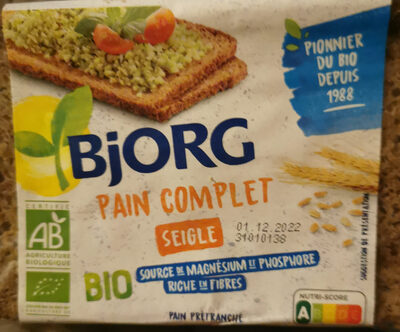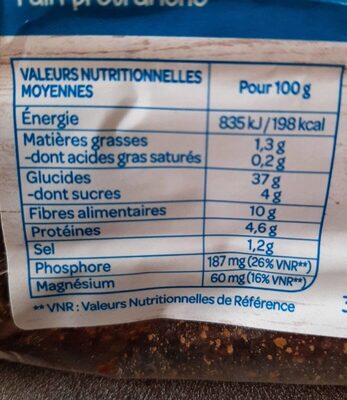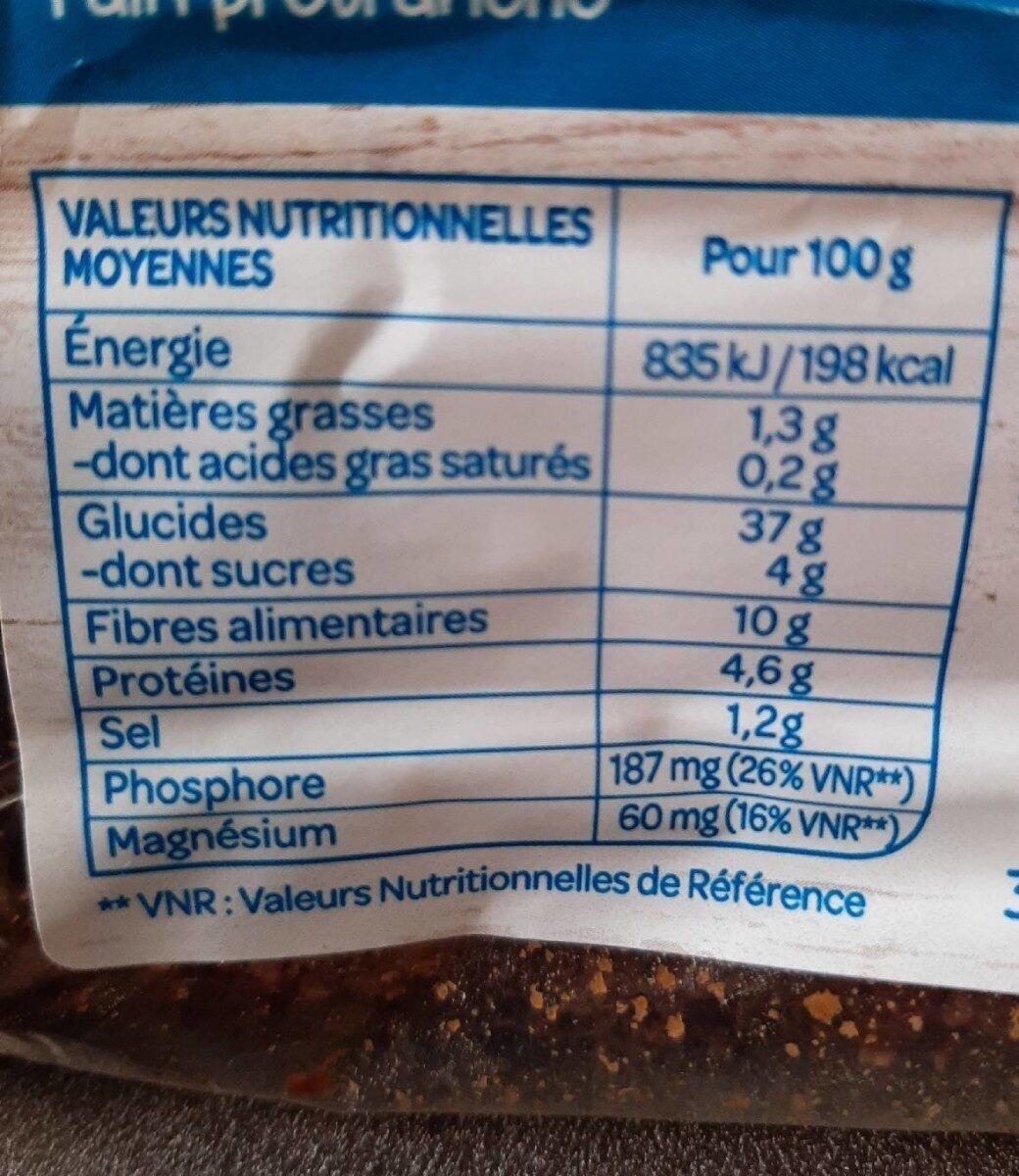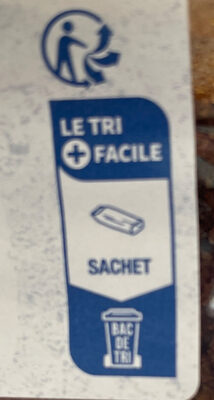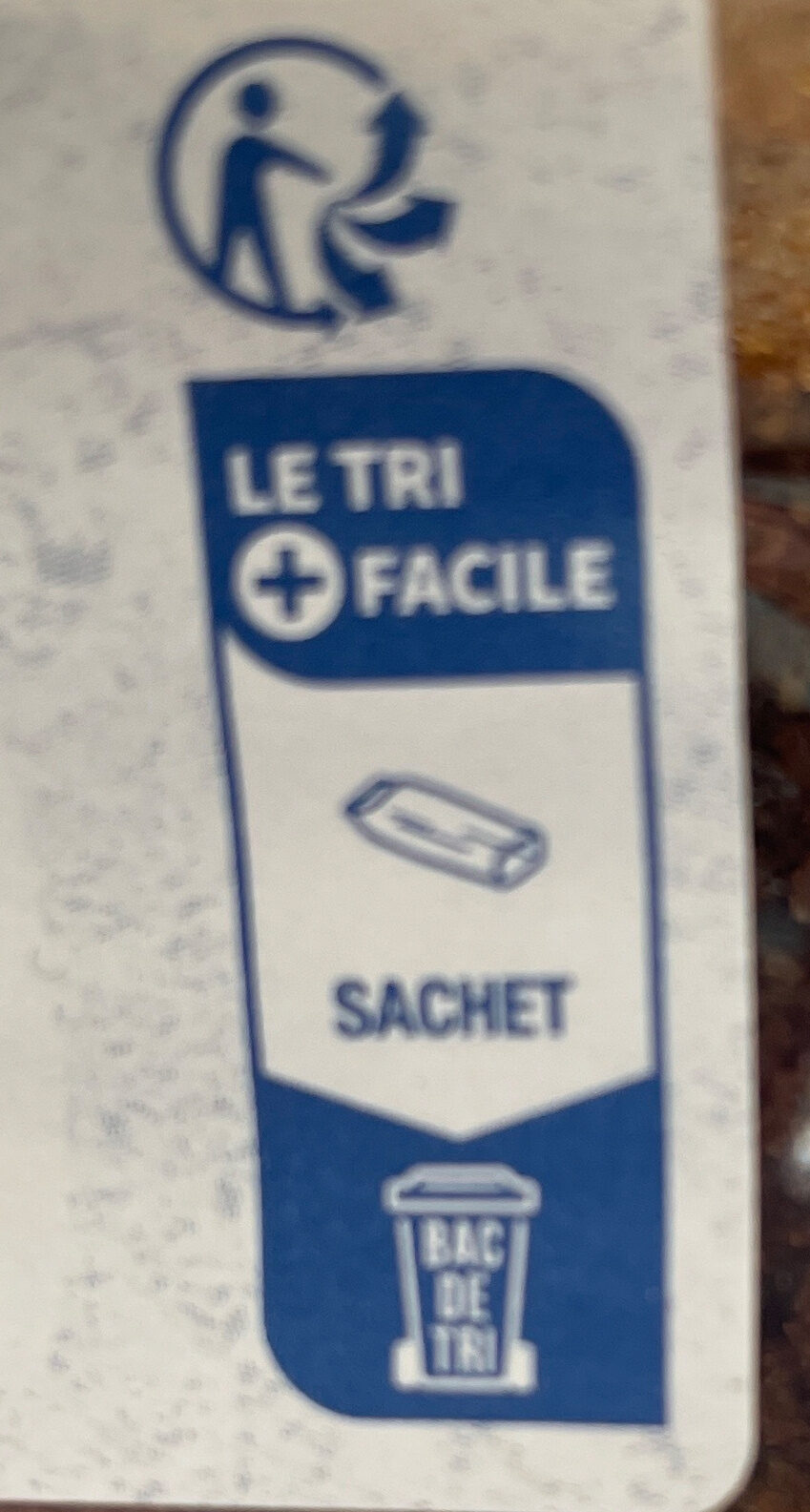Pain complet seigle - Bjorg - 500 g
Barcode: 3229820019208 (EAN / EAN-13)
Common name: pain
Quantity: 500 g
Packaging: Vacuum-packed, fr:Sachet en plastique, fr:Sachet plastique
Brands: Bjorg
Categories: Plant-based foods and beverages, Plant-based foods, Cereals and potatoes, Breads, Rye breads, Wholemeal breads
Labels, certifications, awards:
Organic, EU Organic, DE-ÖKO-001, EU Agriculture, Made in Germany, Nutriscore, Nutriscore Grade A, AB Agriculture Biologique, Triman


Origin of ingredients: Germany, European Union
Manufacturing or processing places: Allemagne
Stores: Monoprix, Intermarché, Magasins U, carrefour.fr
Countries where sold: France
Matching with your preferences
Report a problem
Data sources
Product added on by natacha
Last edit of product page on by moncoachigbas.
Product page also edited by bcs, chevalstar, date-limite-app, driveoff, em-le, foodvisor, hilly, hornetator, inf, kiliweb, laurent1971, lou, magasins-u, manu1400, moon-rabbit, openfoodfacts-contributors, packbot, quechoisir, quentinbrd, roboto-app, segundo, teolemon, yuka.E5JFAPKyGdctR8vjz4QQ2x2kCObiHNxGA1grog, yuka.FLJBZYO5LsF5N8rNyqk93gK4Gvm4LfoAM09Row, yuka.H6htAPeOPMsLPsHK_o4N0D6YBNfmIqBrCFcyog, yuka.R1pFaUtMOFl1OWdoZ2ZBZXBDTEYxZUJaeWJpSWV6dXpBZTRMSWc9PQ, yuka.SDVBRFFQNVJxdFUwdU1BRzh4SFJ5KzlmNUlEMEREMlVEODRESWc9PQ, yuka.SEsweEFKc09oZndwdjlzanBUcU9vZFZ5bDZTQ1VGT3BJdVZBSUE9PQ, yuka.SFk4RUdiZ211dG9ZbGYwWXhneVAxdmhVLzg2bVFYcTBCdk5BSVE9PQ, yuka.UUxFRU9xVVpudVVRaDlvYTJoK0YwZFZibDVHYmQzRzhCTEF3SVE9PQ, yuka.V3FjRkVJMGJ0NlFMd3ZRZHhnLzU5T0ozNkpENFJUdnNGUFlTSWc9PQ, yuka.WUlZYUlQay9oUG9RdHNFQjdoQ0ozZGQ3MlkzNURVeTNkOWhCSUE9PQ, yuka.WjRZK0tyNDVwOFlzcE1RWDR3L3kzNDlWeGFTTUExdW5jOG9USWc9PQ, yuka.ZjRGYVM2a2ordDhVaGRnbitBci8zZkZNeTVpeFRGK3BCdmNMSVE9PQ, yuka.sY2b0xO6T85zoF3NwEKvlhBIYcHUry7WFhbTpWiIxPjfDKfTfu0p5djCEqo, yuka.sY2b0xO6T85zoF3NwEKvlhBZefn_pQzoMjruoxWKw-ucC6Dua9Uis4vKFKs, yuka.sY2b0xO6T85zoF3NwEKvlkxEQcjlhRaZMyXju3WywPePJaPyTelU8NX7H6s.
